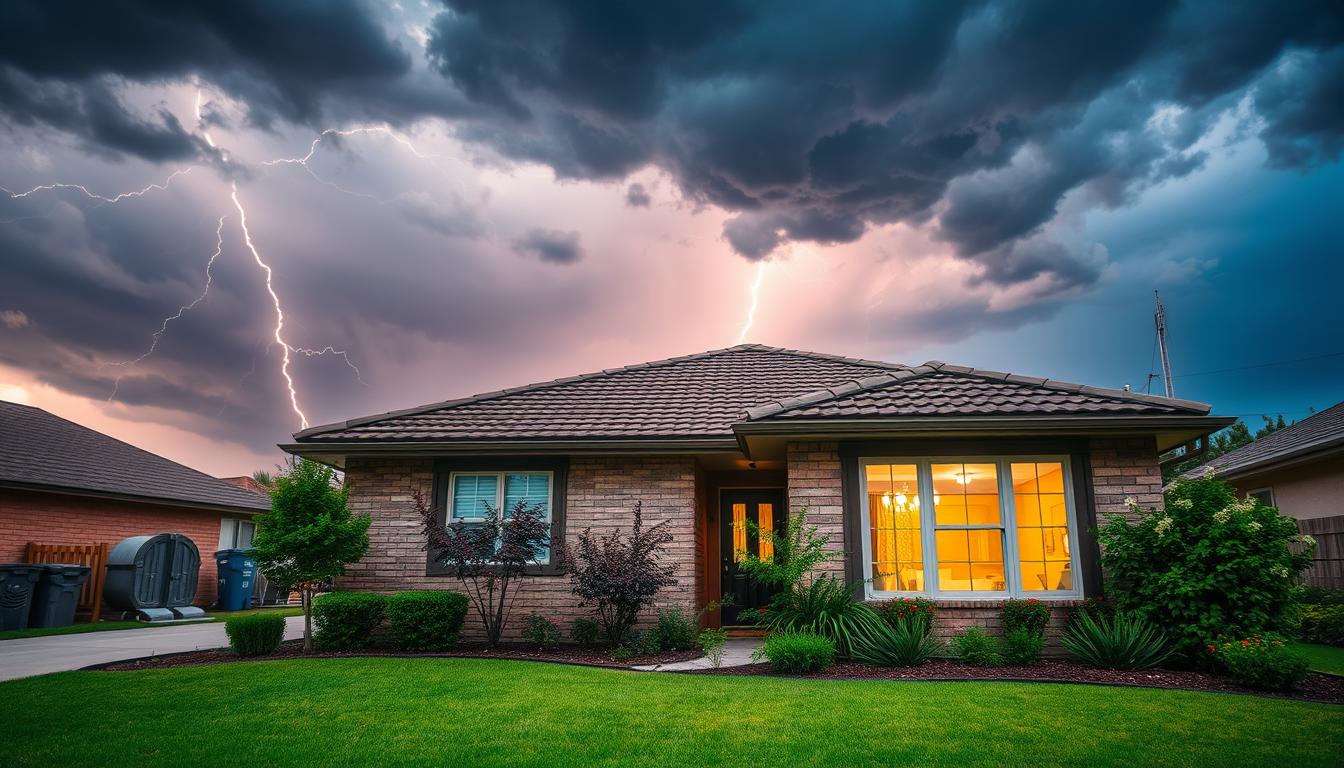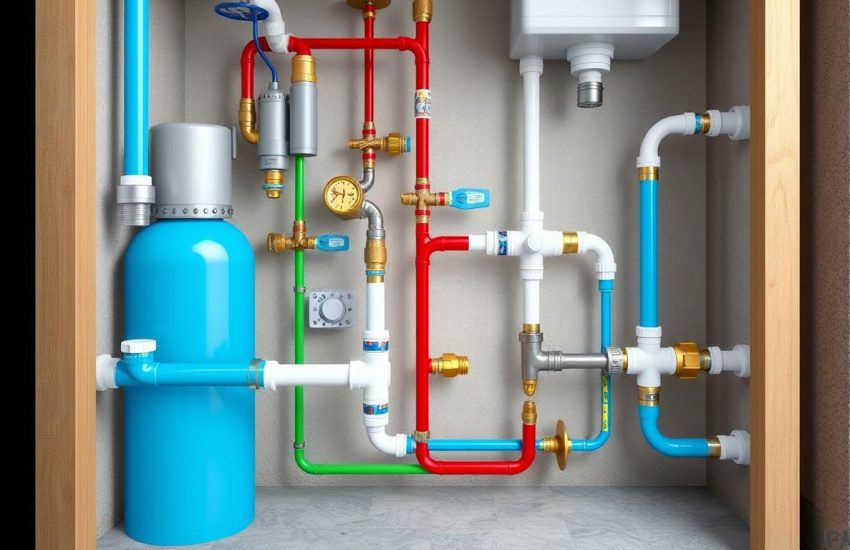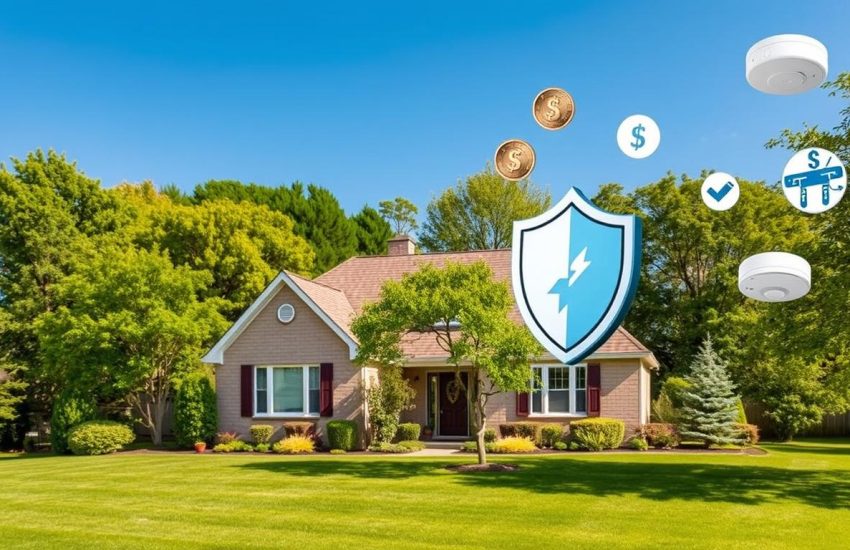Stormproofing Your Home: A Complete Guide for Homeowners
Have you thought about how your home would handle a severe storm? We all want our homes to be safe and peaceful places. But with more extreme weather hitting the U.S., protecting your home matters more than ever. Stormproofing isn’t just for improving your home—it’s a must. This guide helps you strengthen your home against nature’s surprises.
Now more than ever, we need to protect our homes from changing weather. Greater Midwest Exteriors shows stormproofing areas are getting bigger. We have more options to make homes last longer and handle risks better. This guide talks about using tough materials and making sure your insurance covers storm damage. We will also look at things like flood insurance and fiber cement siding. Plus, we’ll talk about the importance of checking and cleaning your home after storms.
Key Takeaways
- The growing scope of stormproofing services affirms the need for region-specific home protection strategies.
- Selecting impact-resistant windows and materials plays a crucial role in minimizing storm damage.
- Consistent maintenance and inspections are key to preserving stormproofing measures.
- Understanding your homeowner’s insurance policy and considering supplemental coverage is critical for comprehensive protection.
- Installation methods for siding and windows can mean the difference between a secure home and one vulnerable to the elements.
- With over 2 million homes in America at risk from wildfires, the relevance of stormproofing cannot be overstated.
- Preparing for weather conditions not originally anticipated is a pragmatic move in today’s shifting climate landscape.
Why Focus on Stormproofing Your Home?
As storms get worse because of global warming, making homes stormproof is getting more crucial. Homeowners need to keep their homes safe without spending too much on stormproofing.
Stormproofing helps avoid costs tied to weather damage like wind, hail, and floods. It keeps you safe and prevents huge money losses. For example, costs for fixing windows, roofs, or water damage can drop with things like hurricane shutters or strong roofs.
Investing in stormproofing upfront can save money over time. Insurance companies often give discounts to homes that are well-prepared. This means you can save on repair bills and insurance costs with smart upgrades.
Keeping your home safe during storms is key. Having battery backups or generators can keep things running when the power goes out. Lightning rods can also protect your electronics from lightning.
| Stormproofing Feature | Benefits | Estimated Savings |
|---|---|---|
| Hurricane Shutters | Protects windows during high winds | Reduces potential window replacement costs by up to 50% |
| Impact-resistant Windows | Less likely to shatter, protecting against wind-driven debris | Avoids damages worth thousands in high-wind scenarios |
| Improved Roofing Materials | Prevents major roof damage during storms | Extends roof lifespan, delaying replacement costs |
In summary, stormproofing is a smart move. It boosts safety and cuts costs from storm damage. Homeowners play a big part in protecting their places from changing weather.
DIY vs Professional Help
When you think about DIY stormproofing your home or hiring professional roofing contractors, you have to consider a few things. Doing simple tasks like putting up plywood for windows or tying down outdoor furniture can be easy to do on your own. But, when it’s about checking or making your roof, windows, and doors stronger, you really need someone who knows their stuff.
For example, experts usually do a 17-point inspection to make sure your roof is ready for a storm. This home inspection looks at important things. It checks the quality of materials like shingles and metal roofing that help your home stand up to bad weather. Getting help from the pros means you can rest easy knowing everything is installed right to last longer and work better.
Thinking about hiring professionals also means you might save money on your home insurance. Some companies, like State Farm and Chubb, give big discounts for homes set up to face storms, but only if the work is done by pros. For instance, State Farm offers up to a 35% discount for homes with special roofs in some places. This shows how much you could save by choosing professional help.
Getting professional help might look expensive at first but can save you money over time. If you don’t do the job right on your own, a storm can cause big damage. This means paying a lot for repairs or new parts. So, paying for expert help for big jobs means your home is better protected. It also means saving money in the long run.
How to Save Money
Stormproofing your home doesn’t have to empty your savings. Using affordable stormproofing your home techniques and proper upkeep cuts costs. It also increases protection against bad weather.
- Regular chores, like cleaning gutters and fixing loose siding, prevent expensive harm. They’re key to weatherproofing techniques.
- Choosing impact-resistant materials can be pricey at first. But, they save money by avoiding repairs post-storms.
- DIY sealing of windows and doors is budget-friendly. It acts as a critical shield against nasty weather.
- Check insurance plans often; some offer discounts for storm-ready homes.
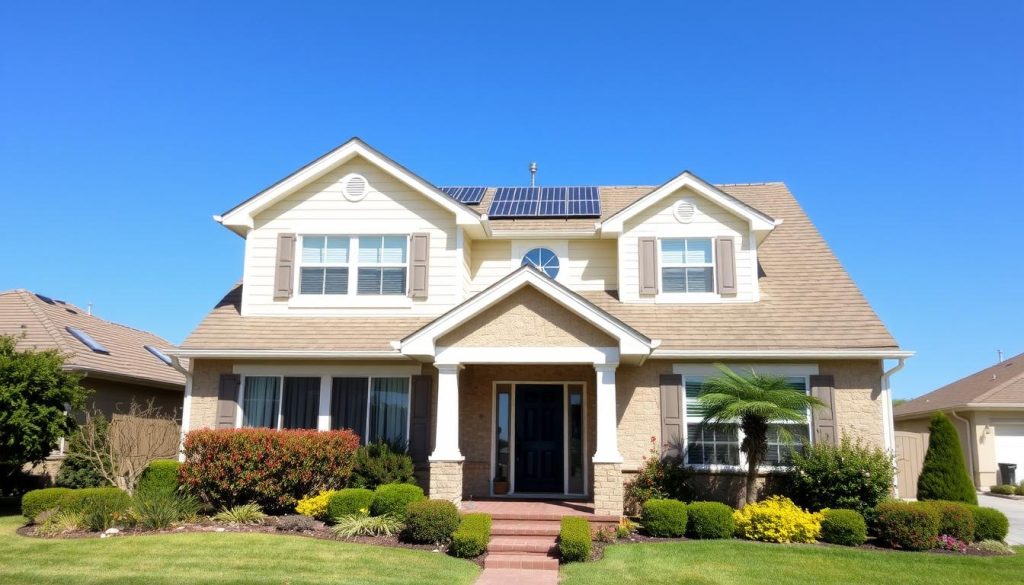
Being proactive not only saves cash. It also makes your home last longer and become stronger. Here’s a chart showing how some stormproofing steps are cost-effective:
| Upgrade | Cost | Savings |
|---|---|---|
| Hurricane Windows | $1,128 – $10,293 | Avoids big repair costs from storms |
| Caulk/Adhesive for Soffits | $600 – $6,000 | Makes your home stronger |
| Metal Clips for Roof-to-Wall Connection | $850 – $1,350 | May lower insurance costs |
| Galvanized Steel Storm Panels | $5 – $6 per square foot | Cheaper than other window options |
Using these methods reduces up-front costs. Plus, it strengthens your home’s defense against weather issues, mixing efficiency with affordable stormproofing your home actions.
Step-by-Step Upgrades
Implementing stormproofing upgrades needs careful planning and action. It’s to keep your home safe in severe weather. This article shows steps to make your house stronger against storms.
First, it’s key to make your home’s structure stronger. Begin with the roof by adding hurricane straps. This helps it against strong winds during hurricanes. In areas prone to these conditions, switching to stronger windows and doors is a must. For homes close to the coast in Florida, impact windows are needed for their strength against hurricane winds. Also, replace garage doors with ones that can withstand hurricanes. This stops them from breaking early in a storm.
- Elevate electrical panels and systems to avoid water damage.
- Secure windows and doors to stop damage from flying debris.
To manage costs well, talk to an IBHS Certified Engineer. They can help get insurance discounts and make sure your home meets safety standards. Also, keep contacts like your insurance and FEMA ready for internet outages during storms.
| Upgrade | Recommendation | Cost |
|---|---|---|
| Impact Windows Installation | Mandatory within 1 mile of the coast | $12,000 (Whole House) |
| Garage Door | Upgrade to hurricane resistant | Varies |
| Hurricane Straps | Add to roof | Varies based on roof size |
It’s smart to keep up with regular home care. Also, use licensed contractors for any repairs after storms. This keeps the stormproofing upgrades working well. No home can be totally safe from hurricanes, but these steps help a lot.
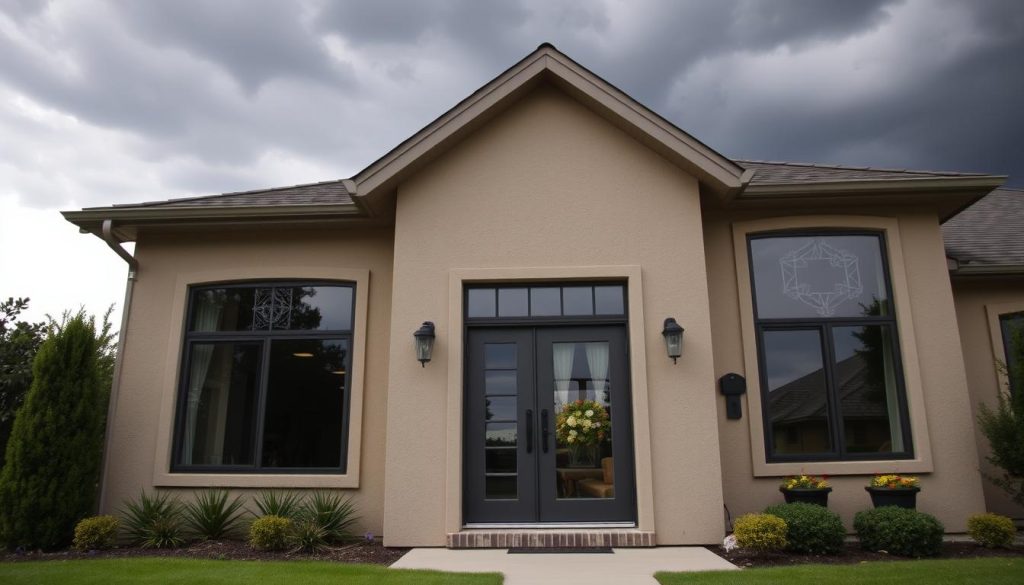
Final Tips for Success
Protecting your home from storms is a key step for staying safe. Stormproofing success means starting well and keeping up the effort. Hurricanes cost homes along the coast about $34 billion annually. So, you must always work to protect your property. This work includes checking and fixing your house often. Pay extra attention to the roof, windows, doors, and walls. Doing this will help your home stand strong against bad weather. It also helps in cutting down the time and money needed to fix damages afterwards.
When picking strong windows and other protections, focus on quality and durability. The starting cost for making your home hurricane-proof ranges from $10,000 to $20,000. This money is for the safety and long-term protection of your home. It’s important to look into different ways to pay for these updates. Options include Homeowners insurance, PACE loans, or a Home Equity Line of Credit. This way, the costs won’t be too hard to handle. Also, practicing emergency plans with your family can greatly improve how well you respond to disasters.
Lastly, it’s crucial to keep learning about stormproofing. As new methods and materials come out, update your home to make it stronger. Get ready for storms long before they arrive. Improve your home’s defenses, check your emergency supplies, and make sure your insurance is good. This prepares your home to face any storm. And when storms come, your home will stand strong, showing your efforts in stormproofing worked.

